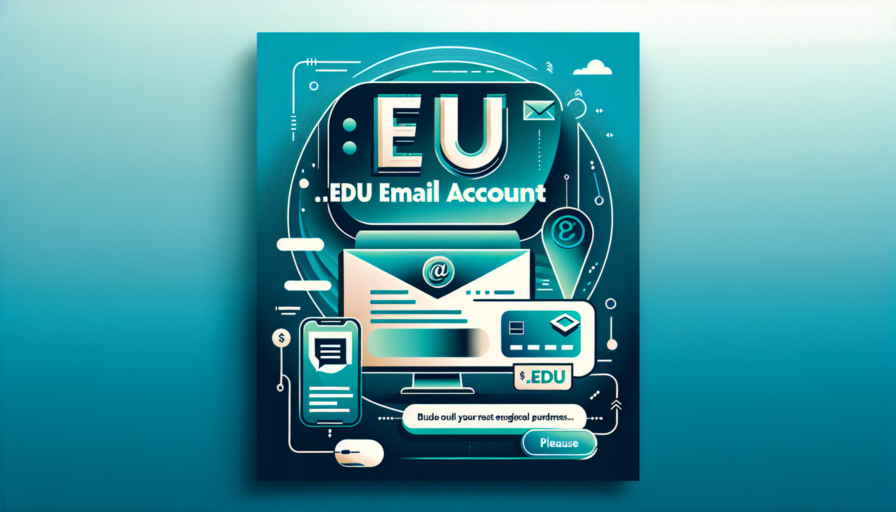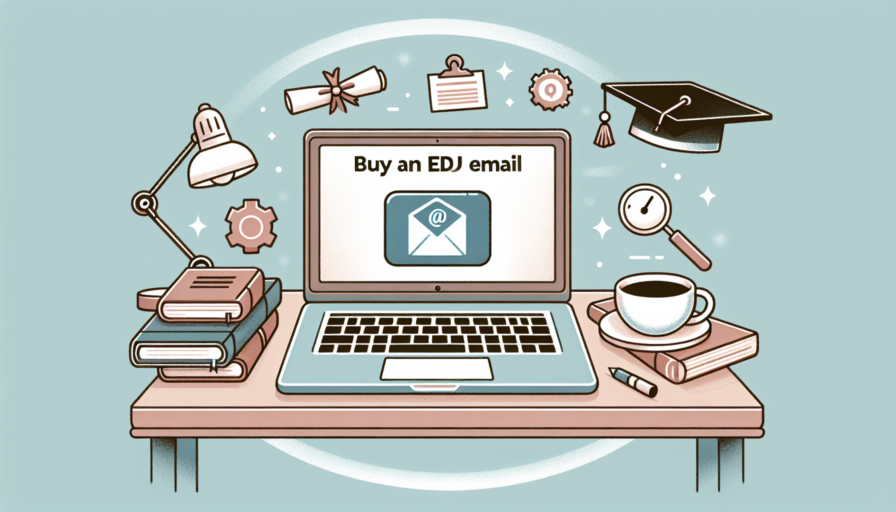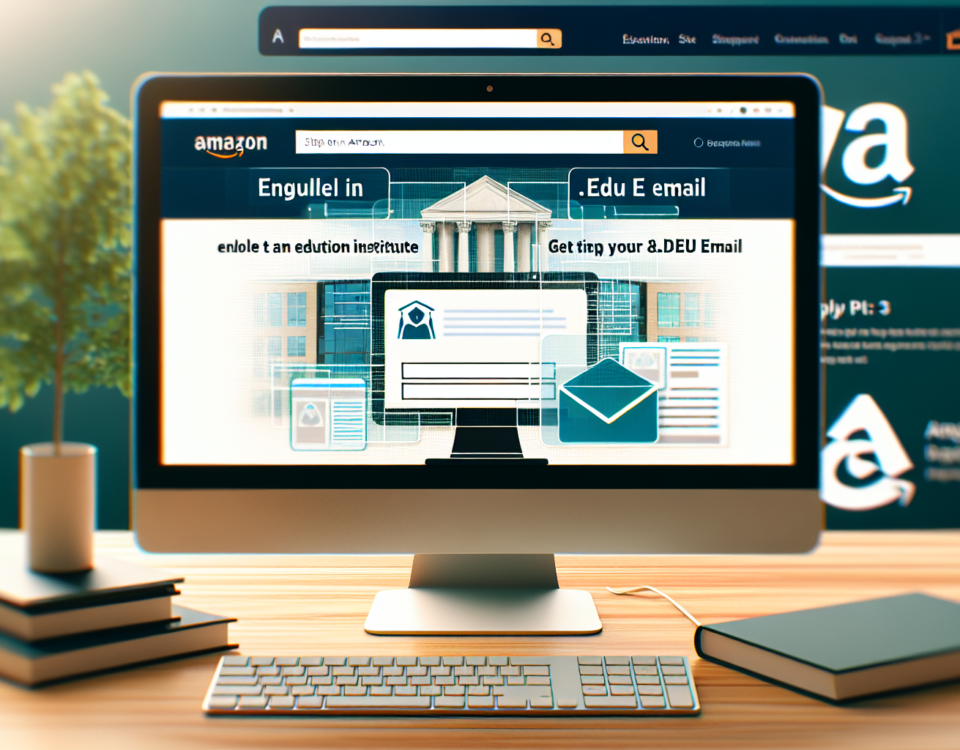
Ultimate Guide to Outlook Edu Email: Setup, Benefits & Tips for Students and Educators
February 15, 2024Ultimate Guide: How to Get a Fake .edu Email Address Legally
February 15, 2024Why You Need an .EDU Email Address Quickly
Having an .EDU email address is considered a golden ticket for students and educators alike. It’s not just a means of communication; this specific type of email account unlocks a plethora of benefits that are exclusively reserved for the education sector. If you’re currently without one, there’s a sense of urgency to acquire an .EDU email address quickly, as it could significantly enhance your educational experience and provide you with a range of opportunities that are not accessible through standard email accounts.
Access to Educational Resources
One compelling reason to get an .EDU email address swiftly is the unparalleled access it provides to a vast array of educational resources. Many online platforms and services offer free or discounted access to students and educators with a valid .EDU email. From scholarly journals and libraries to software suites like Microsoft Office 365 and Adobe Creative Cloud, the cost-saving aspect cannot be overstated. Delaying the acquisition of this valuable resource means missing out on precious tools that can aid in your educational development.
Exclusive Discounts and Offers
It’s not just academic tools and software that come with beneficial offers – an array of exclusive discounts and offers await holders of an .EDU email address. This includes reduced pricing on products and services, ranging from electronics, such as laptops and tablets, to even clothing and food. Especially for budget-conscious students, these savings are a substantial reason to set up an .EDU email as quickly as possible. Every day without one might mean a missed opportunity for significant financial savings.
Networking and Career Advantages
Finally, in the competitive landscape of academics and career development, having an .EDU email provides a strategic advantage. It serves as a badge of credibility and signifies your active participation in the academic community. This credibility can be pivotal when networking, applying for internships, or corresponding with potential employers. The faster you can begin networking with an .EDU email, the more you can capitalize on this benefit to foster professional relationships and opportunities.
Step-by-Step: Create Your .EDU Email in 10 Minutes
When it comes to accessing educational resources, discounts, and offers online, having a .EDU email account can be your golden ticket. Many students and educators may not realize just how simple and quick it is to set up their own .EDU email address. In the following guide, we’ll break down the process for you in easy-to-follow steps that will take no more than 10 minutes of your time.
Getting Started with Your Institution’s Website
First, you’ll need to visit your educational institution’s official website. Typically, you will find the option to create a .EDU email address under the ‘Current Students’ or ‘Faculty and Staff’ sections. Click on the relevant link to start the process. It’s important to have your identification details handy—this includes your student or employee ID, full name, and birthdate. Most schools will use this information to verify your affiliation with the institution before granting you an email address.
Crafting Your Email Identity
Once you are on the email creation page, you will likely be prompted to choose your new email address. It is advisable to select an email ID that is professional and recognizable, incorporating your name or initials where possible. Fill out any necessary forms with the required personal information and create a strong password that you will remember. Remember to follow the guidelines for password creation, which often include a mix of uppercase and lowercase letters, numbers, and symbols to ensure the security of your account.
Finalizing Your .EDU Email Setup
After submitting your details, you will usually receive an email confirmation or be directed to a confirmation screen. Follow any additional instructions provided to activate your new .EDU email account. This could involve clicking on an activation link or logging into your account for the first time. Once completed, take a moment to explore your new inbox and familiarize yourself with the features and settings available to you. Setting up email forwarding, creating a signature, and organizing your inbox with folders can all help streamline your communications experience.
By following these straightforward steps, you can easily set up your .EDU email within a brief 10-minute window, unlocking a wide array of benefits and resources designed to aid you in your educational journey. Remember, having a .EDU email not only helps in distinguishing your academic communications but also provides you with numerous perks that are exclusive to the educational community.
Verifying and Securing Your New .EDU Email Quickly
Acquiring a new .EDU email address is often a rite of passage for students and educators alike; however, this digital asset requires prompt verification and securing to ensure its benefits are fully maximized. Upon receipt of your new .EDU email, immediacy in verification not only activates your account but also unlocks exclusive educational resources, software discounts, and library databases crucial for academic development. Therefore, it is imperative to follow through with the verification process without delay to avoid any interruptions in access to these vital academic tools.
Secure your .EDU Email Account is more than just a recommendation; it’s a must in today’s digital landscape. Simple steps such as creating a strong, unique password and setting up two-factor authentication (2FA) can provide an additional layer of security against potential breaches. The utilization of 2FA entails a secondary form of verification – typically a code received via text or an authentication app – which significantly reduces the risk of unauthorized access. Remember that a .EDU email account is not only a gateway to academic materials but also a potential target for phishing attempts and other cyber threats.
Moreover, maintaining the integrity of your .EDU email involves staying vigilant about the information you receive and share through this medium. Avoid clicking on links or downloading attachments from unknown senders, as these could expose your educational email to malware or scams. Educate yourself on the latest cybersecurity threats and adopt a proactive approach by regularly updating your passwords and reviewing your email account’s security settings. Doing so ensures that your .EDU email remains a secure channel for your scholastic communications.
Tips and Tricks for Immediate .EDU Email Activation
When attempting to activate your .EDU email, it’s crucial to ensure that all provided information is accurate and up-to-date. One of the essential factors in immediate activation is verifying your identity and student status with the educational institution. Always double-check that you have entered your full legal name as it appears on your school records, and be sure that any student ID numbers are input precisely without errors. Inaccuracies in details like these can lead to delays in the activation process.
Utilize the School’s Resources
Many schools offer detailed guides and step-by-step instructions on their websites specifically for email activation. Before beginning the process, it’s worth taking the time to locate these resources and follow the instructions closely. If you encounter any issues, don’t hesitate to reach out to the school’s IT support team. They are usually prompt in assisting students with email-related concerns, and contacting them directly can hasten the resolution of any problems.
Accurate timing can also play a key role in a swift .EDU email activation. Some educational institutions process email activations during regular business hours or at specific times of the week. Therefore, submitting your activation request during these times can result in a faster turnaround. If the system allows for it, consider timing your activation effort to coincide with these periods.
In some cases, certain web browsers or devices may encounter compatibility issues with the email activation system. To avoid such setbacks, it is advisable to complete the activation process using recommended browsers, such as the latest versions of Google Chrome or Mozilla Firefox. Ensure that your browser is updated to the latest version and clear its cache before initiating the process. These preventative steps can help avoid technical glitches that might delay the activation of your .EDU email account.
Troubleshooting Common Issues with Fast .EDU Email Setup
Setting up a .EDU email account quickly can run into several snags that vary from user authentication problems to server connectivity. Understanding these common issues is key to resolving them efficiently and successfully accessing your educational email services. One frequent stumbling block is incorrect credential input, which leads to authentication failures. Users should ensure they’re entering their .EDU email addresses and passwords correctly, paying attention to case sensitivity and any special characters that might be part of their login credentials.
Another prevalent concern arises in the form of server downtime or maintenance periods. Educational institutions periodically update their servers, which can temporarily hinder email setup processes. To combat this, check the institution’s IT service status page for any announcements regarding maintenance schedules. This can help in estimating when to attempt the setup again. If server status is not the issue, verify your internet connection’s stability, as continuous connectivity is essential for a smooth setup process.
In situations where your setup procedure seems to hang or fail without clear reasoning, disabling browser extensions, particularly ad blockers or script blockers, might resolve the issue. These extensions can interfere with the scripts running on the setup page, preventing successful account creation or login. Also, ensure that your browser is up to date, as outdated versions may not support the latest web standards required by the email setup process. If all else fails, clearing your browser’s cache and cookies can eliminate any stored data that may be contributing to the problem.
Lastly, issues with verification emails not being received are another common hindrance. This could be due to the emails taking some time to process or being filtered into spam or junk folders. Users should check these folders and also ensure that their mailbox is not full, as this prevents new emails from being delivered. If the verification email is nowhere to be found after a significant waiting period, requesting a new verification email or contacting the institution’s technical support team for assistance would be the next course of action.








